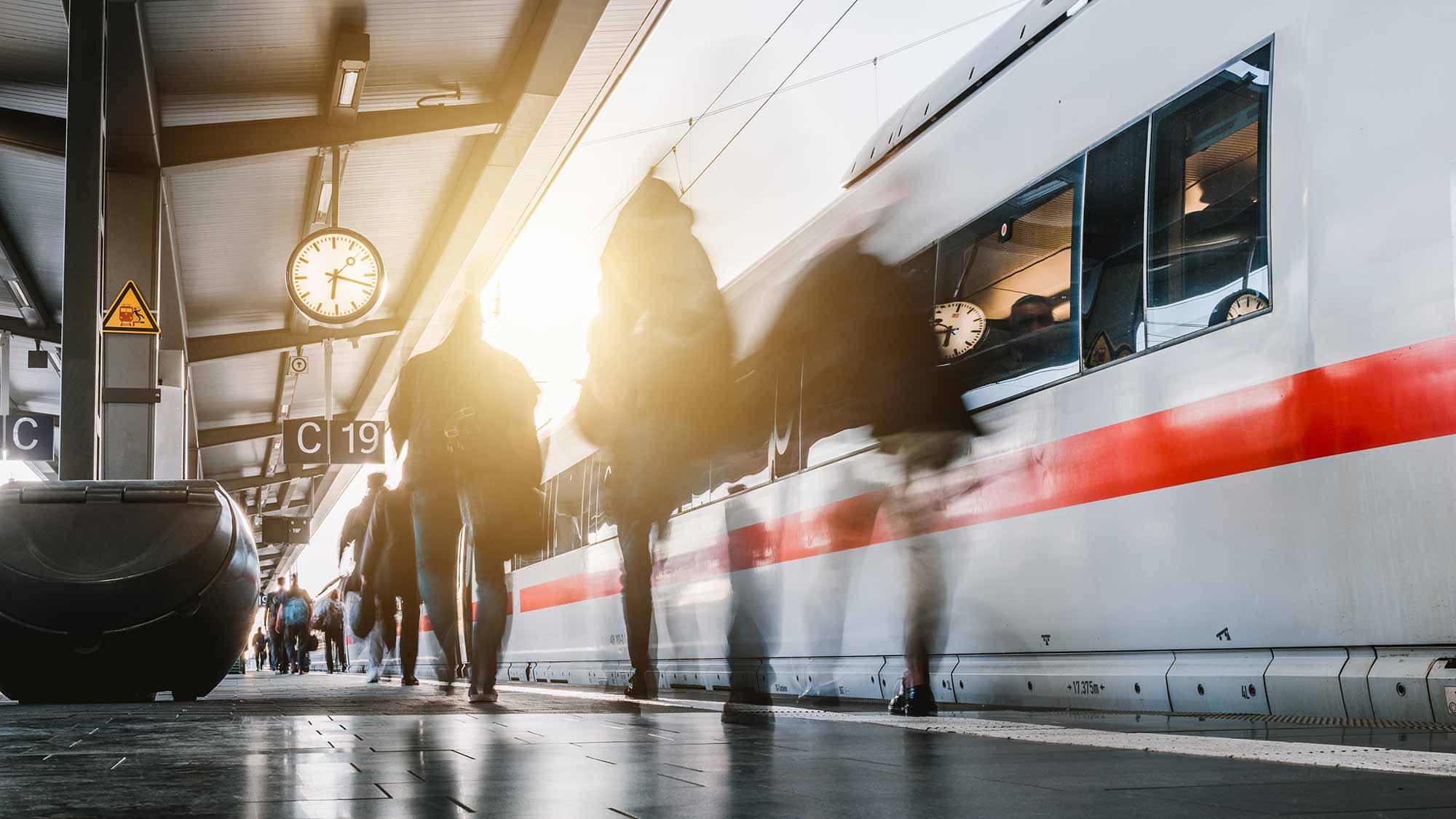Digital transformation continues to ripple through the world’s economies. For complex, evolving industries like rail, it’s sometimes been hard to define and prioritise the investments in digital that will address longstanding operational issues. Many leaders in the sector are still wondering where to spend in order to produce the rising quality of service that customers and regulators demand? Arup’s Global Rail Leader, T. C. Chew, and its Global Digital Services Leader, Will Cavendish sat down to explore the ways digital rail might become a reality.
Digital rail: where to start
Many aspects of rail network operation, from its safety, its ways of working, its customer offer, to how carries out maintenance could be transformed by digital technologies. For T.C., the form it takes will vary depending on the state of the existing local network: “I’ve observed 40-odd years of railway transition, from a very old, mechanised state-of-affairs to now a mixed, electronic system. Realistically, we are still being challenged by the legacy of that mechanised frame of thinking. If we look at the Asia Pacific region, where they’re developing many new railways, we are likely to see digital being adopted far more extensively and more quickly than on the older systems we have in the UK, the U.S. and Europe. Another big influential factor is the push for net-zero operations in rail, where digital technology will be vital if we are to achieve this challenging goal.”
“Another big influential factor is the push for net-zero operations in rail, where digital technology will be vital if we are to achieve this challenging goal. ”
TC Chew Director
Intelligent assets mean greater control
Viewed as a complex system of assets and operations, one that is still partly anchored in the mechanical and electronic ages, the possibility of bringing a rail network under full real-time digital control is a compelling proposition. But is it a realistic ambition? “I would say yes, and that the benefits could be very significant,” observes Will. “There will need to be big upfront investments in data and systems, but, on any given network, you could significantly increase the safe capacity and running of that network through the digitisation of the control and safety systems. That means increased train services, and an increase in the network’s capacity, which is, obviously, momentous given the demand and infrastructure constraints that exist."
For T.C., having real-time insights into assets – from rolling stock to track and supporting infrastructure – would lead to a step-change in the quality and scope of decision making: “It would optimise the way that you look after your asset and lead to quite a profound change in the way rail networks operate. When things do break down, if you can understand the severity of the failure level in fine detail, you can actually manage the recovery process much faster and lower the impact on operations. It would allow for a more graceful and contained response.”
The net zero rail network?
Transport infrastructure is going to be central to how countries achieve net zero emissions. If rail is to contribute, we will clearly need far greater insight into emissions generated across the network. T. C. explains, “we will need our trains to become real-time processors of their own operational and performance data. They could compute the most cost-effective way of driving the train from A to B, with insights on acceleration, given the topography and geometry, using regenerative breaking and so on. Data can improve the system, anywhere within the network, all the time. And that’s an exciting leap away from the mechanical age, I’d say.”
Why the delay
Much of digital’s promise requires that common data standards and interoperability are established in networks that today are a patchwork of competing, proprietary and incompatible standards, owned and protected by supplier-competitors. For Will, this calls for leadership. “The benefits of digital and data are only realised through common standards, so that you can build systems that learn from every element of the network. To achieve this, the regulatory authorities must define and enforce those standards, making adherence to them a condition of any future investment. This will be a major shift in industry mindset. But I think of it like rail gauges: you can no more have different gauges within a physical rail network than you can have different formats and standards within a digital network. It simply won’t work.”
Assets at the tipping point
Big change in long-evolved industries is understandably hard. Yet often in the digital economy, one revolutionary product or service will take off and an entire industry suddenly rethinks its model. It has happened to banking, hotels, taxis… so why not also rail? For T. C., given its clear operational value, the likely catalyst is digital asset management: “It could be that an operator invests in a really effective digital twin strategy, producing great improvements in service and a greater understanding of how things are running, and it becomes a de facto standard for others to follow.”
For Will, it’s the familiar day-to-day rail to-do list that could galvanise the investment: “There are so many familiar operational issues and threats – like landslides and protection of earthworks, or predictive track maintenance – that can now be managed through remote sensors. Some systems are using cameras on trains to monitor things locally, but too often there’s no centralised system that brings all of this intelligence together. That integration, though complex, holds so much promise for a better run network.”
 ;
;
